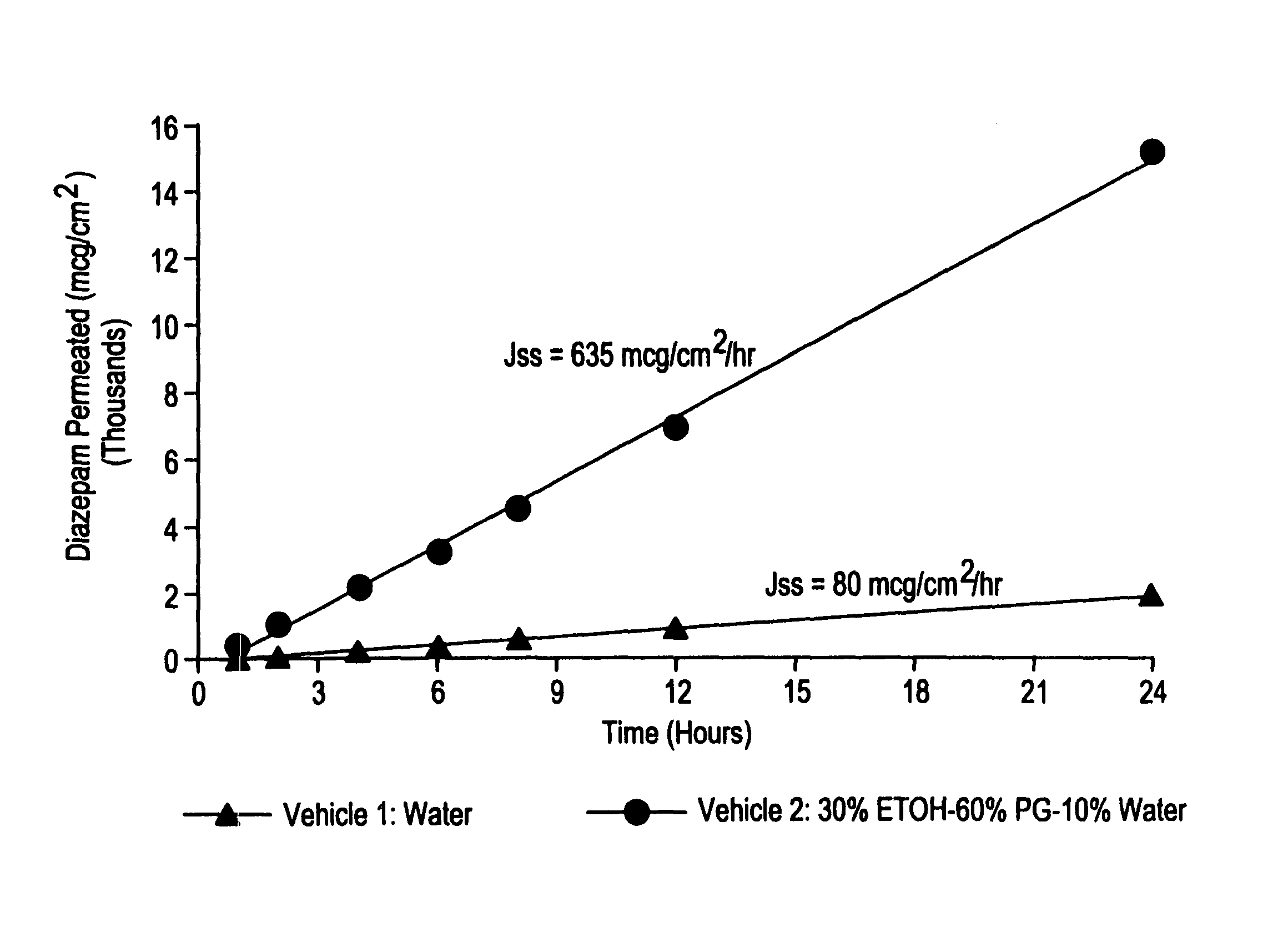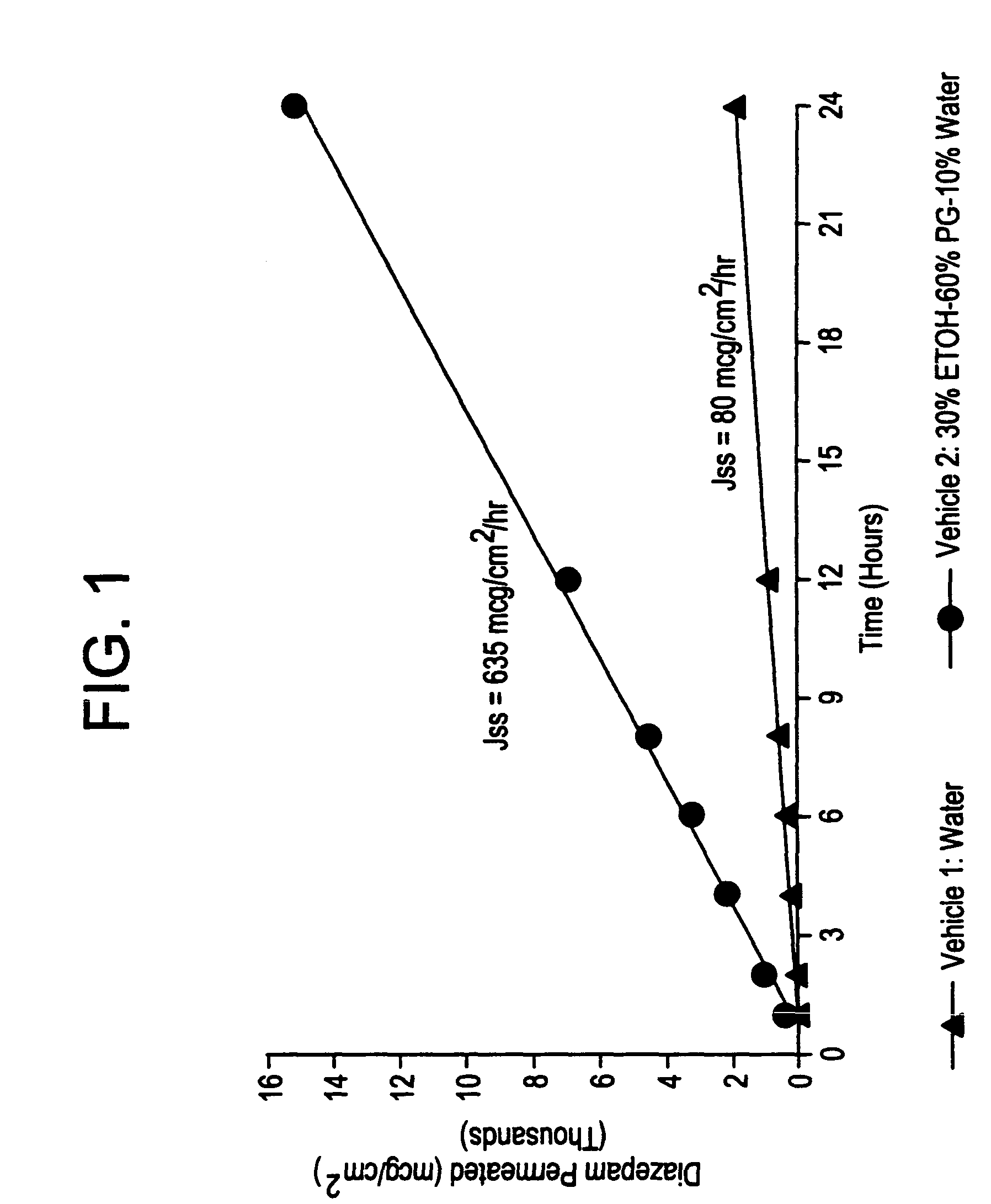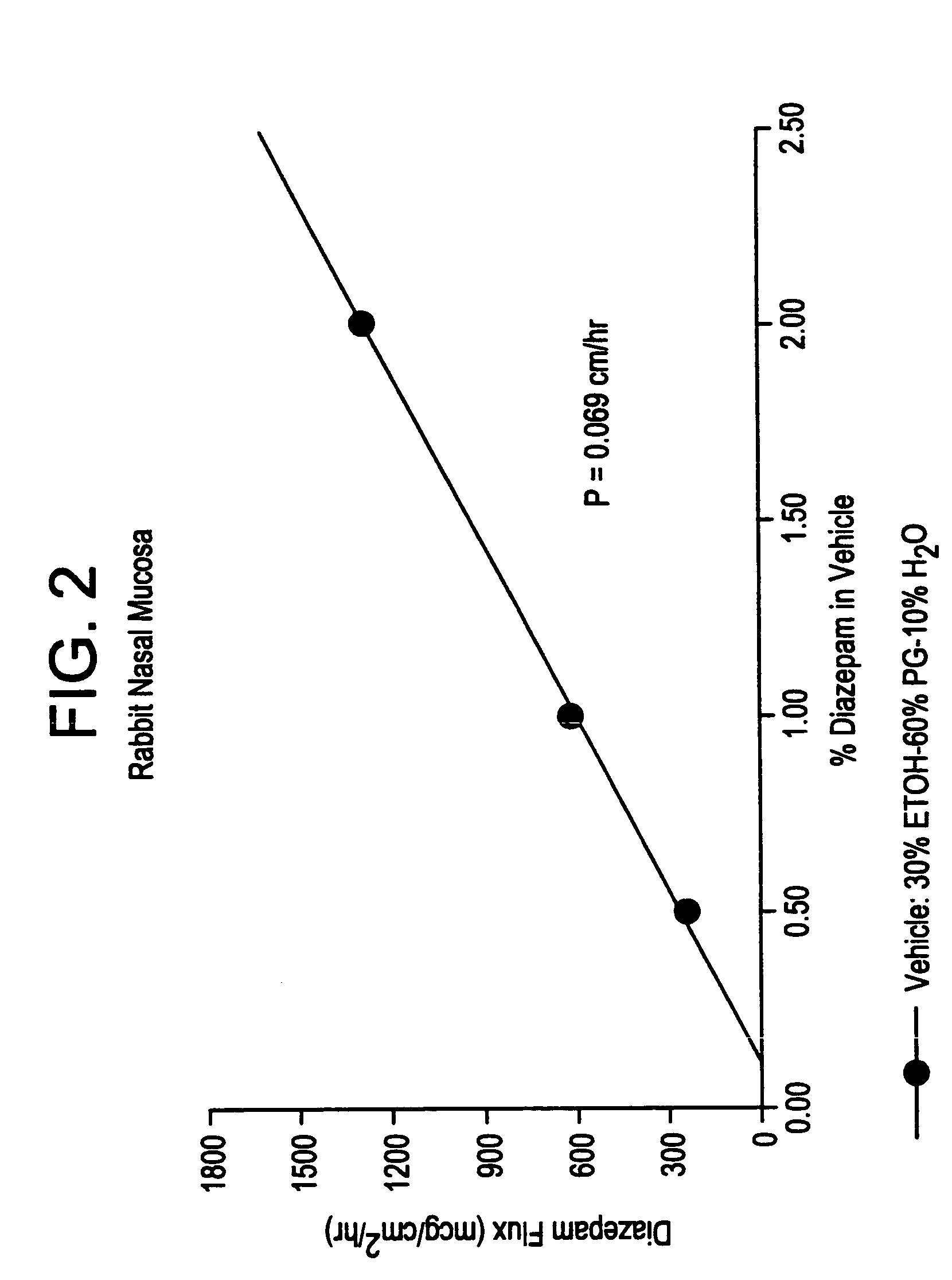Transnasal anticonvulsive compositions and modulated process
a technology of compositions and anticonvulsive agents, applied in the direction of drug compositions, biocide, aerosol delivery, etc., can solve the problems of inconvenient rectal route drug administration, inability to achieve desired levels of therapeutic agents by means of simple transnasal administration, and inability to achieve simple transnasal administration. achieve optimal therapeutic effect, avoid or reduce adverse side effects, and enhance the effect of transmucosal permeation and absorption
- Summary
- Abstract
- Description
- Claims
- Application Information
AI Technical Summary
Benefits of technology
Problems solved by technology
Method used
Image
Examples
example 1
In Vitro Nasal Membrane Permeation Studies
[0020]The nasal mucous membrane used in these in vitro experiments was obtained from New Zealand White rabbits (2.5–3.0 kg). Rabbits were sacrificed by IV injection of phenobarbital. The nasal septum was carefully removed from a bone block using surgical scissors and a bone-cutting saw. Two pieces of nasal mucous membranes were then carefully stripped from the nasal septum without touching the center of the membrane surface and rinsed with normal saline solution. The mucosal membrane was mounted between two half-cells of a glass diffusion cell apparatus. The exposed area of the nasal membrane was approximately 0.64 cm2. A test solution or suspension (3.5 ml) was introduced into the mucosal side of the membrane in the donor compartment while 3.5 ml of 10% ethanol, 40% propylene glycol, and 50% pH 7.4 isotonic phosphate buffer solution was added to the receptor compartment. The entire diffusion system was maintained at 37° C. throughout the ex...
example 2
[0022]This example shows the effect of a bile salt and a lecithin dissolved in an aqueous medium at a 1% w / v level on the in vitro permeation of a model drug diazepam through the freshly excised nasal membrane. In these studies, a series of bile salts such as sodium cholate, sodium deoxycholate, sodium taurocholate, and sodium glycocholate, and a lecithin such as lysophosphtidylcholine were examined. The permeation rates were measured using the method described under the in vitro membrane permeation test method. The average steady-state transnasal flux data obtained in this manner are presented in Table I.
[0023]
TABLE IEffect of Bile Salts and Lecithin on the In Vitro Permeation ofDiazepam across the Rabbit Nasal Mucosal Membrane at 37° C.Mean Transnasal FluxVehicle(μg / cm2 / hr) (n = 2)Water79.51% Sodium Cholate / H2O66.31% Sodium Deoxycholate / H2O74.91% Sodium Taurocholate / H2O87.01% Sodium Glycocholate / H2O96.41% Lysophosphotidylcholine / H2O125.5
[0024]As seen from Table I, a bile salt such...
example 3
[0025]This example exhibits the influence of a vehicle on the in vitro membrane permeation of diazepam across the rabbit nasal mucous membrane at 37° C. In this experiment, a 1% diazepam suspension and solution were prepared using water and a co-solvent vehicle consisting of 30% ethanol (ETOH), 60% propylene glycol (PG), and 10% water (WT), respectively. The permeation rates were determined utilizing the method described in Example 1. The transnasal permeation profiles of diazepam obtained in this manner are presented in FIG. 1.
[0026]As seen from FIG. 1, a co-solvent vehicle comprising ethanol, propylene glycol, and water provides an approximately 8 times increase in the transnasal permeation rate of diazepam when compared with that obtained with an aqueous suspension.
PUM
| Property | Measurement | Unit |
|---|---|---|
| area | aaaaa | aaaaa |
| volume | aaaaa | aaaaa |
| UV wavelengths | aaaaa | aaaaa |
Abstract
Description
Claims
Application Information
 Login to View More
Login to View More - R&D
- Intellectual Property
- Life Sciences
- Materials
- Tech Scout
- Unparalleled Data Quality
- Higher Quality Content
- 60% Fewer Hallucinations
Browse by: Latest US Patents, China's latest patents, Technical Efficacy Thesaurus, Application Domain, Technology Topic, Popular Technical Reports.
© 2025 PatSnap. All rights reserved.Legal|Privacy policy|Modern Slavery Act Transparency Statement|Sitemap|About US| Contact US: help@patsnap.com



